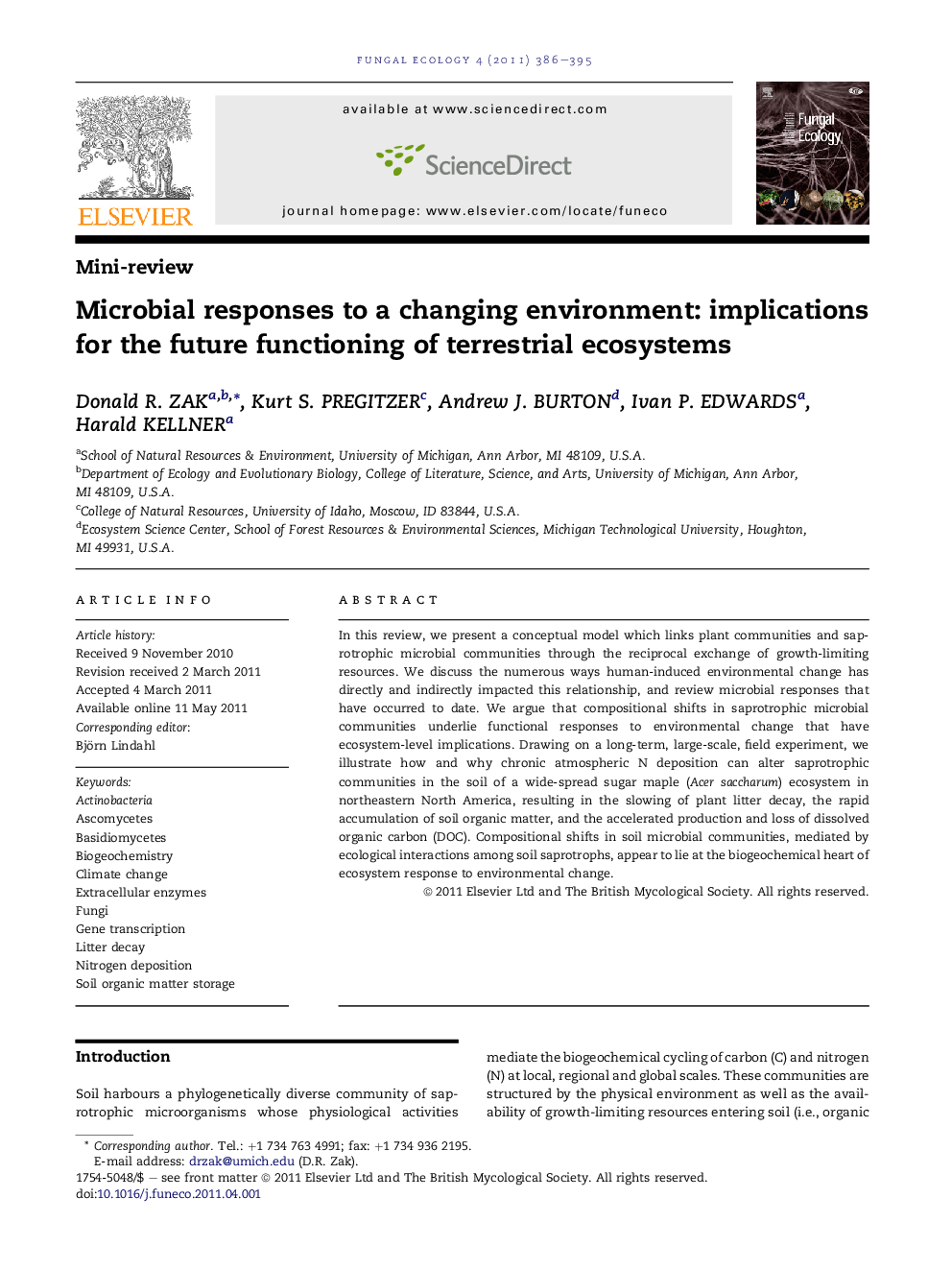| Article ID | Journal | Published Year | Pages | File Type |
|---|---|---|---|---|
| 2054101 | Fungal Ecology | 2011 | 10 Pages |
In this review, we present a conceptual model which links plant communities and saprotrophic microbial communities through the reciprocal exchange of growth-limiting resources. We discuss the numerous ways human-induced environmental change has directly and indirectly impacted this relationship, and review microbial responses that have occurred to date. We argue that compositional shifts in saprotrophic microbial communities underlie functional responses to environmental change that have ecosystem-level implications. Drawing on a long-term, large-scale, field experiment, we illustrate how and why chronic atmospheric N deposition can alter saprotrophic communities in the soil of a wide-spread sugar maple (Acer saccharum) ecosystem in northeastern North America, resulting in the slowing of plant litter decay, the rapid accumulation of soil organic matter, and the accelerated production and loss of dissolved organic carbon (DOC). Compositional shifts in soil microbial communities, mediated by ecological interactions among soil saprotrophs, appear to lie at the biogeochemical heart of ecosystem response to environmental change.
